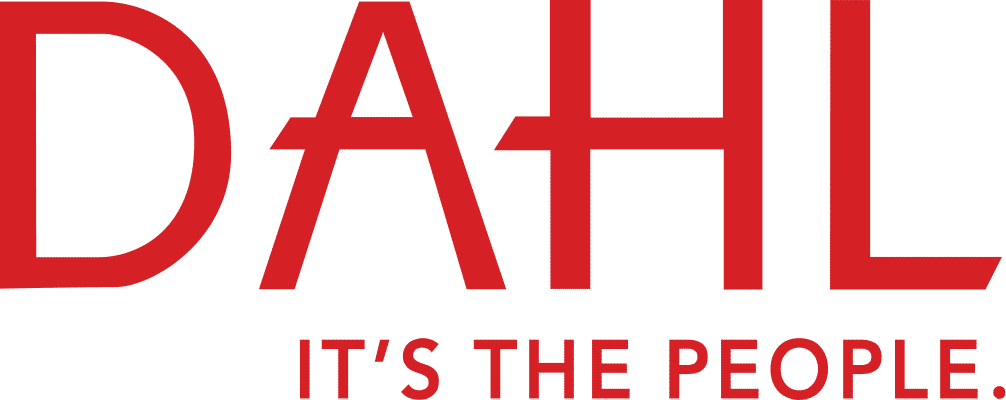As we step into the unfolding labor market landscape of 2024, employers find themselves at the intersection of unprecedented challenges and opportunities. LinkedIn’s recently released annual State of the Labor Market report provides valuable insights that shed light on the intricate dynamics that employers must navigate.
As your employment experts, Dahl Consulting is committed to providing news and resources to keep our business and talent partners informed on workforce trends and shifts, especially during times of uncertainty as it relates to hiring. In this article, we will dissect these insights, offering a nuanced understanding of what the current state of the labor market means for employers and how they can strategically position themselves this year.
Stabilizing Hiring
Overall, hiring rates appear to be stabilizing. In the United States, there was a 5.5% hiring increase in December compared to November, the largest month-over-month increase in 2023. Over the past year, the pace of hiring remained relatively stable overall. However, the economic landscape remains uncertain, which will inevitably impact the job market.
Due to hiring stabilization, many remain optimistic that there will be a “soft landing,” and that the Federal Reserve will not increase interest rates. A UNC Economist, however, cited historically high unemployment rates, inflationary pressures, and the average monthly payroll gain of around 200,000, which may result in a “hard landing” instead. This uncertainty is not a cause for panic, but rather, for caution. Although the market is not bad, hiring demand is “moderate.” To maintain a stable job market, job postings and retention will need to increase.
Certain industries are leading the stabilization trend, namely, Technology, Information, and Media. Hiring increased in these sectors during the final quarter of 2023 and is overall up 11.6% since July. Insight Global identified additional areas that are “primed for growth ” in the coming year, despite the dynamic job market and the challenges that it provides for businesses. These industries include the following: healthcare, cybersecurity, e-commerce, biotechnology, construction, finance, and more.
Competitive Job Market
Job openings have decreased and job quits have stabilized, creating a more competitive job market. This creates a more competitive hiring environment for job seekers, with fewer opportunities to find new positions. This contrasts sharply with trends during The Great Reshuffle that occurred during 2021-2022, with 53% of workers choosing to enter a new field altogether .
With today’s competitive job market, employers should focus on employee retention and talent acquisition to both keep and attract top talent to their organizations. Going into 2024 with a focus on employee engagement and satisfaction should continue to be a priority. Additionally, maintaining the promotion of a positive and dynamic employer brand image and company culture can help attract talent that will be a good long-term fit for your business.
Flexible Work Arrangements
It is likely unsurprising that flexible work arrangements will continue to trend in 2024. However, the concept of an adaptable work environment is trending more toward hybrid models as remote work declines. Hybrid work arrangements are becoming “the new normal” for most professionals, as it helps to strike a balance between return to office (RTO) initiatives and employee demands for work-life flexibility. LinkedIn’s Global State of Remote and Hybrid Work report cited a drop in remote work to only 8.9% of job postings on their site compared to a whopping 20.3% of job postings in April of 2022.
On-site work overall has increasingly made a comeback since the end of the pandemic, and ResumeBuilder reported that 90% of employers are planning on having workers return to the office by 2024. Only 2% of the 1,000 corporate decision-makers stated that they never plan to have employees return to the office. Many RTO initiatives are based on the belief that having workers on site will improve culture, productivity, and collaboration. However, it is important for organizations to keep the desires of employees in mind as well to prevent losing top talent to competitors that offer more flexibility in work arrangements, whether that be hybrid or remote work.
Job Seeker Trends
Job seekers are wary of the job market this year due to the mixed consensus on the economic projections for 2024. In fact, according to a survey conducted by MyPerfectResume, 8 in 10 respondents (78%) expecting a recession and 85% worried they’ll lose their jobs in 2024. This contributes to the competitive job market outlined, as employees are less likely to leave their current jobs.
Interestingly, despite economic challenges, 75% of job seekers still anticipate salary increases in the new year. According to SHRM, US employers plan to raise compensation budgets in 2024 by 3.5% for merit increases and 3.9% for total salary increases for nonunionized employees. It is important to note that while pay increases will still occur, these increases are still lower than in previous years. Organizations that fail to remain competitive in such a tight market expose themselves to potentially losing key players and top performers.
Your Employment Navigator
After delving into the anticipated trends for the 2024 labor market, we hope you have gained valuable insights that you can apply to your organization’s employment-related plans this year. If you are looking for a strategic partner to help you navigate the complex labor market in 2024 and beyond, consider connecting with Dahl Consulting. We offer customizable workforce solutions backed by over four decades of experience navigating the turbulent economic factors that affect hiring and business. Get connected with our employment experts today!




